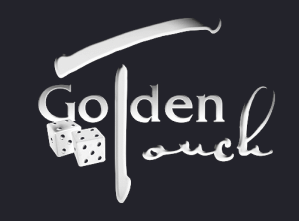
Pitch, Roll, Yaw. Descriptions Of These Odd Crap Terms
Whats Pitch, Whats Roll, and What the Devil is Yaw?
While the average dice thrower may never have heard these words when talking about throwing dice, some of the more technical books available use these terms to describe the movement of dice in the air.
The terms "pitch", "roll" and "yaw" when applied to dice traveling through the air are taken from aviation lingo. When an airplane's nose goes up or down it is called "pitch." Therefore when the dice rotate on the horizontal axis in relation to each other, it is called pitch. One die can pitch a single face or two (double) faces. The single pitch can be in either direction. A triple pitch of a die in one direction is the same as a single pitch in the other direction, so you most likely will never hear the term "triple pitch". A "hardway" set combined with a careful throw is commonly purported to help reduce the appearance of the dreaded 7. It is formed by placing the hardway numbers (5-5, 4-4, 2-2, and 3-3) around the outside of the dice and placing the 6 and 1 on the ends. While the hardway set may reduce the appearance of the 7, a double pitch on a hardway set causes sevens on all four sides of the dice.
When an airplane's wings go down on one side (and up on the other), it is called a roll. If an airplane makes a 360 degree turn on this axis it is called a "barrel roll." This maneuver will cause a sensation that may be great for an amusement park ride, but it might cause just a little bit of concern among an airplanes passengers.
When the dice "roll", they move on the front to back horizontal axis (not the side to side horizontal axis). When using a hardway set a single roll will show a 6 or 1 on top. A single roll of each die will show two 6's or two 1's on the top and bottom if they roll in the same direction or a 1 and 6 on the top and bottom if they single roll in opposite directions. Additionally, if you use a hardway set a double roll of one die in relation to the other will produce two 7's on the top and bottom and two hardways in the front and back of the dice. To look at it another way, a double roll, whether caused by a single roll of each die (in opposite directions), or a double roll of one die will produce two 7s and two hardways - not quite as bad as a double pitch which produces nothing but 7's around the dice.
Now, what about the curious term "yaw?" Possibly this term is taken from the name for the Levantine (the countries bordering the eastern Mediterranean Sea from Turkey to Egypt) god of chaos. More likely it comes from navigation of sea vessels. In this setting, yaw is "a movement of a vessel by which she temporarily alters course; a deviation from a straight course in steering." Taking this paradigm to aviation, a yaw is movement about the vertical axis, or, turning left or right. The dice "yaw" when they rotate on their vertical axis.
A yaw (or multiple yaws) will produce the same results as "rolls" except on the front and back faces instead of the top and bottom faces. With a hardway set, a double yaw of one die produces hardways on the top and bottom and 7's on the front and back of the dice. Also, as with rolls, a double yaw caused by a single yaw in each of the two dice in different directions, or a double yaw by one die produces two 7s and two hardways.
In reality, if you just look at the results, you cannot tell if the dice rolled or yawed, since the only difference is which face the dice rotated on. And that is good, because remembering pitch and roll is much easier than remember pitch, roll, and yaw.
Well, there you have it. I hope this article will help you understand the difference between "pitch", "roll", and "yaw" - y'all. As a controlled shooter "rolls" and "yaws" are bad. They mean that you are not controlling the dice well enough to keep them "on-axis." If you exhibit only primaries and "pitches" you are controlling the dice. Though the algorithms used are quite complex, this is essentially what the Smart Craps software uses to determine your degree of dice control.

May all your rolls be yaw-less!
And remember: A picture may be worth a thousand words, but it uses up three thousand times the memory.
Stickman


